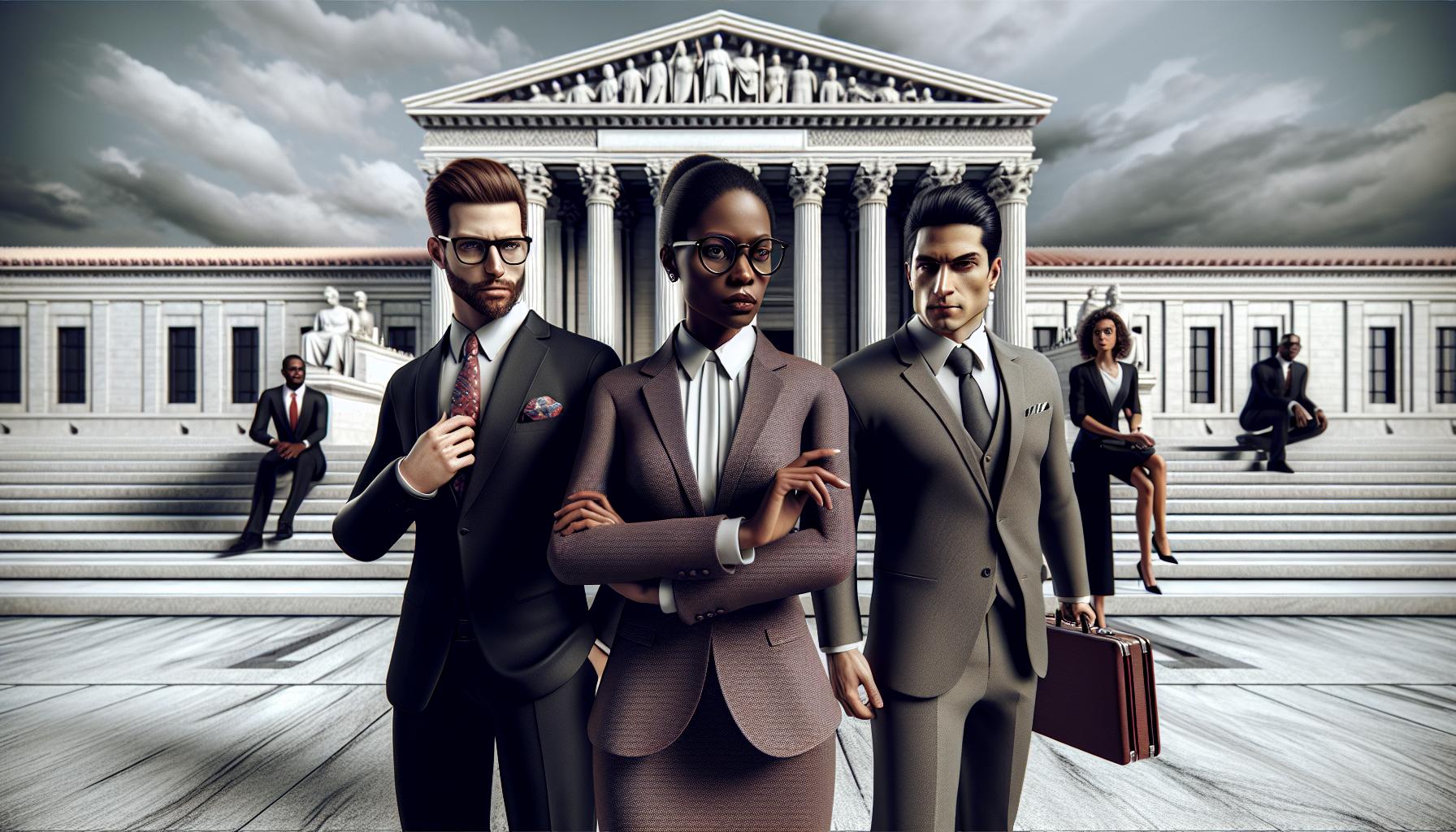Physical Address
304 North Cardinal St.
Dorchester Center, MA 02124

The Supreme Court’s landmark social media case stands at the intersection of constitutional rights and modern digital communication. As states like Florida and Texas push for laws restricting social media companies’ content moderation practices, the nation’s highest court faces crucial decisions about free speech in the digital age.
This pivotal case challenges the fundamental balance between First Amendment protections and government regulation of online platforms. Social media giants argue these state laws violate their editorial discretion, while state officials contend the platforms have become so powerful they require oversight to prevent censorship. The outcome will likely reshape how Facebook, Twitter, and other platforms manage content and could fundamentally alter the digital landscape for millions of Americans.
The Supreme Court confronts two pivotal state laws that challenge social media companies’ content moderation practices. These cases, NetChoice v. Paxton and Moody v. NetChoice, examine the intersection of digital platform rights and government regulation.
The Supreme Court examines three fundamental constitutional questions in these cases:
The Supreme Court reviews two distinct state approaches to social media regulation:

Texas HB 20 and Florida SB 7072 impose specific restrictions on how social media platforms with over 50 million monthly users moderate content and interact with users. These laws represent significant state-level attempts to regulate social media companies’ operations.
Texas HB 20 prohibits social media platforms from censoring content based on viewpoint or geographic location within Texas. The law requires platforms to maintain detailed complaint systems for content removal decisions. Florida SB 7072 limits content moderation of political candidates, requiring platforms to apply standards consistently across all users. Platforms face fines up to $250,000 per day for violations involving political candidates in Florida.
The laws establish specific user protections for account holders on major social media platforms. Texas law mandates platforms to:
| Law Requirement | Texas HB 20 | Florida SB 7072 |
|---|---|---|
| Platform Size Threshold | 50M+ monthly users | 100M+ daily users |
| Maximum Daily Fines | $25,000 | $250,000 |
| Notice Period | 48 hours | 30 days |
| Appeals Timeline | 14 days | 7 days |
The Supreme Court’s examination of social media regulation laws raises critical First Amendment questions about freedom of expression in digital spaces. These cases challenge traditional interpretations of constitutional protections in the context of modern communication platforms.
Social media companies assert First Amendment protections as private entities with editorial discretion over their platforms. Companies like Meta, Twitter, and YouTube exercise content moderation rights similar to traditional publishers, removing or flagging content that violates their community guidelines. The platforms’ position aligns with precedents such as Miami Herald Publishing Co. v. Tornillo (1974), which established that private media entities maintain control over their content decisions.
Key constitutional protections for platforms include:
The public forum doctrine’s application to social media platforms presents complex constitutional questions. Traditional public forums include physical spaces like parks streets where First Amendment protections are strongest. Social media platforms, despite their significant role in public discourse, operate as private spaces rather than government-designated public forums.
Key aspects of the public forum analysis:
| Case | Year | Key Finding |
|---|---|---|
| Marsh v. Alabama | 1946 | Private property serving public function has First Amendment obligations |
| PruneYard Shopping Center v. Robins | 1980 | States can require private property to accommodate some speech |
| Manhattan Community Access v. Halleck | 2019 | Private operators of public access channels not state actors |
Major technology companies express significant concerns about state laws restricting content moderation practices. Industry leaders emphasize the potential disruption to online safety measures and platform operations.
Tech companies warn that state-imposed restrictions compromise their ability to remove harmful content from their platforms. Meta reports blocking 7.1 billion fake accounts in 2023, while X (formerly Twitter) flags 6.5 million posts monthly for violating platform policies. Content moderation teams focus on removing specific categories of content:
The proposed regulations create operational hurdles for social media platforms’ existing business frameworks. Financial implications include:
| Cost Category | Estimated Annual Impact |
|---|---|
| Compliance Infrastructure | $300-500 million |
| Legal Documentation | $150-200 million |
| Additional Staff | $75-100 million |
| System Modifications | $200-250 million |
The Supreme Court’s ruling on state social media laws presents multiple scenarios that could reshape digital communication regulations. Legal experts anticipate varying degrees of impact based on the Court’s interpretation of First Amendment protections in the digital sphere.
The Court’s decision determines state authority boundaries for regulating social media platforms. Three potential outcomes emerge: complete invalidation of state laws, partial validation with specific restrictions, or full validation of state regulatory powers. A ruling favoring state authority enables implementation of content moderation laws across multiple jurisdictions, impacting platform operations in areas like:
The ruling establishes a framework for future digital speech regulation across platforms. Key implications include:
| Regulatory Impact Area | Current Status | Post-Ruling Changes |
|---|---|---|
| Content Moderation | Platform-controlled | State-influenced standards |
| User Appeals | Voluntary systems | Mandatory processes |
| Geographic Restrictions | Limited | State-specific rules |
| Transparency Reports | Optional | Required documentation |
| Financial Penalties | Market-based | State-enforced fines |
The ruling influences technological innovation, platform development capacity, and user experience across social media services. Social media companies adapt their operations based on regulatory requirements, affecting 250 million U.S. users across major platforms.
The Supreme Court’s ruling on social media content moderation will mark a pivotal moment in digital communication history. Their decision won’t just affect how platforms manage content – it’ll reshape the entire landscape of online expression and digital rights.
Whatever the outcome the implications will ripple through social media companies state legislatures and millions of users nationwide. The balance between protecting free speech and maintaining safe online spaces hangs in the balance.
A clear precedent from this case will guide future digital regulations and help define the role of social media in modern democracy. As technology continues to evolve this landmark decision will serve as a crucial reference point for years to come.